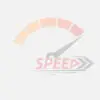
The Beginner’s Guide To Search Engine Optimization
Create Amazing Content
Creating amazing content for your users is the easiest way to increase organic traffic to your site and rank higher in google search results. Keyword research is the process of finding keywords that you want to rank for in search engines. It’s about understanding a potential customer’s intent.
You want to keep track of the Who, What, When, Where and Why …
- Who: Who are the type of people searching for this content?
- What: What are the keywords you want to target? Be selective! Separate the keywords by Topic/Category/Genre.
- When: Keep note of the market trends associated with this keyword. Is there a spike for this keyword in December? What about March? This information will help you schedule when you should push out content related to that keyword.
- Where: Are people in a specific region searching for this keyword.
- Why: Perhaps the most important. Why is the user searching for this keyword? What is the user’s intent? Analyze the problem or query the user is trying to resolve. What other queries might come up after they found that answer? These questions are vital for content creation. The more useful your content is to the user, the higher you will rank.
- Aside: This probably seems like a ton of data to crawl through. All SEO specialists have their go-to tools that make this entire process a little easier. Some of my favorites include Moz Link Explorer, SEMrush, and Google Keyword Planner (free option).
So, at this point we have collected, analyzed, and organized all the data we will need to create awesome content for our users. Next, we need to figure out how our content will be structured within our site.
Think of your content as a tree diagram. As you go deeper into the tree, the content should be more selective and meticulous. Eventually you will be writing blogs/articles about one specific product or keyword. The more organized your content is, and the more accessible it is for Google bots to crawl your site. This organized internal link structure is particularly important in terms of SEO. Each article should be linking to other credible resources outside your website, as well as related topics that the user may want to inquire within your website.
Here are some important questions to ask yourself:
- What content should I publish and when?
- What are my goals?
- How will I measure success?
- Be as specific as possible!
Analyzing your site’s performance and health
As you may assume, content development is not the only attribute google looks for when ranking your site. Here are some other Important factors to consider:
Site Page Speed
- How long does it take for your page to load? If you are trying to get more organic traffic to your site, this factor is vital to your success. Why does google rank faster sites higher in their search results? The bounce rate of user who visits a fast site is substantially lower than those who visit slow sites. Bounce rates represent the percentage of visitors who enter the site and then leave rather than continuing to view other pages within the same site. Google wins when their customers are satisfied. One of the ways they measure customer satisfaction is through the user’s bounce rate. The longer a user stays on your site, the more likely it is they found what they are looking for.
Now it’s time to throw some google stats your way:
- The probability of bounce increases 32% as page load time goes from 1 second to 3 seconds.
- At 5 seconds, the probability of bounce increases to 90%.
- As we extend the page load time to 6 seconds, the bounce rate increases to 106%.
How to check your site’s speed for desktop and mobile
- To check your Shopify site speed, try PageSpeed Insights!
- To check your WordPress site speed, try GTmetrixs!
Why is mobile important?
- 80% of the people looking at your site will be doing so through their mobile device.
Optimize Header Tags
- HTML header tags are used to differentiate the headings (h1) and sub-headings (h2-h6) of a page from the rest of the content. Your H1 tags should be reserved to the primary keyword you are targeting in your article! And there should only be one H1 tag per article. The title of your article/blog should be enticing and strategic, plan accordingly and be truthful to the value the article brings.
Meta Descriptions
- A meta description is a brief description of about 155 characters that summarize what your page is about. You also want to be strategic with your meta descriptions. If the user gets the answer they ARE looking for by reading meta description, then there would be no reason for them to click into your site! Also, every page of your site should have a meta description emphasizing the keyword you are targeting.
Creating a Sitemap.xml file
- XML sitemaps help search engines and spiders discover the pages on your website. These sitemaps give search engines a website’s URLs and offer data a complete map of all pages on a site. Basically, in order for a google bot to crawl your website efficiently, you need to create a sitemap.xml file. Don’t freak out! There are a ton of plugins that will do the work for you!
- Check out the Yoast Plugin!
Optimize your Images!
- High resolution images can be made smaller, and smaller images can be compressed. You’d be surprised the influence larger images have on your page’s load time. Also, (another important note) every image within your site should have an alt tag associated with it. An alt tag, also known as “alt attribute” and “alt description,” is an HTML attribute applied to image tags to provide a text alternative for search engines. By describing what the image is, you are giving Google’s search bots important context when crawling the page.
Other tips and tricks to improve the overall performance and health of your site:
- Include a CDN
- Add expire Headers
- Use themes that are optimized for SEO! Remember, You get what you pay for.
- Reduce your total number of plugins used, and Choose lightweight Plugins that are already optimize for SEO
- Make sure all pages on your site are indexed!
- Include a Navigational bar throughout your site for easy navigation
- Make sure you include internal links and external links to credible sources in your articles
- Take advantage of Free google tools to help your business: Google Analytics, Google tag manager, Google My Business, Google Search Console
Interested in reliable SEO Services? Lets have a chat and discuss your performance goals!




